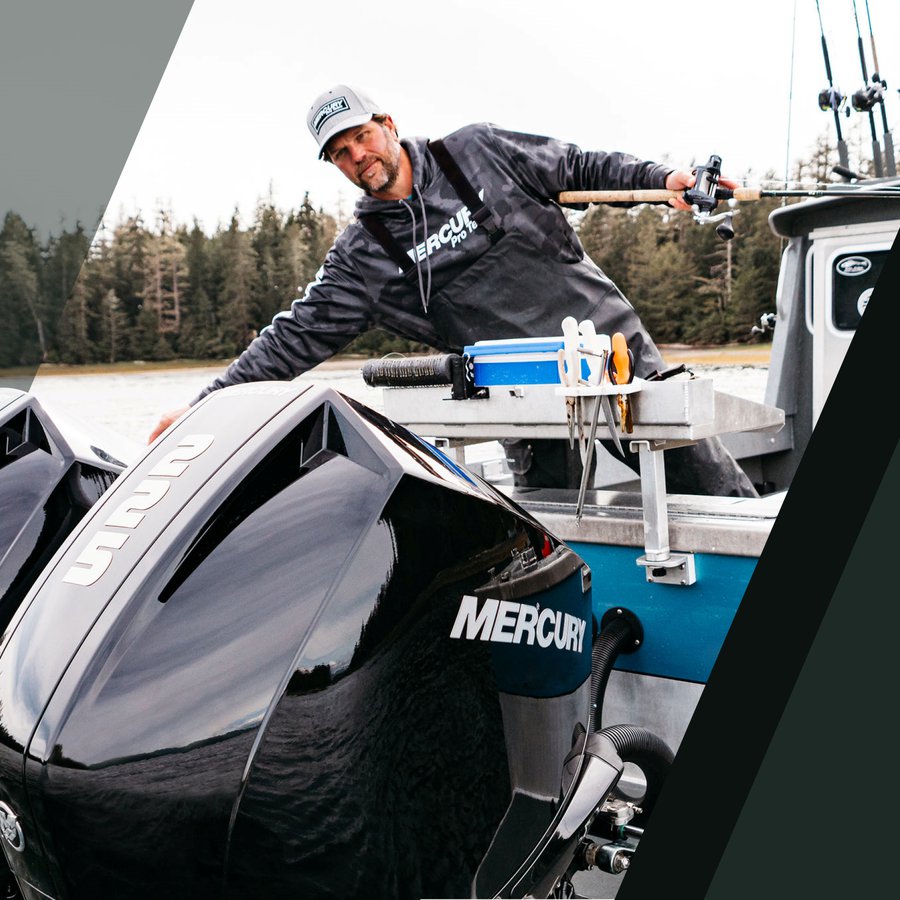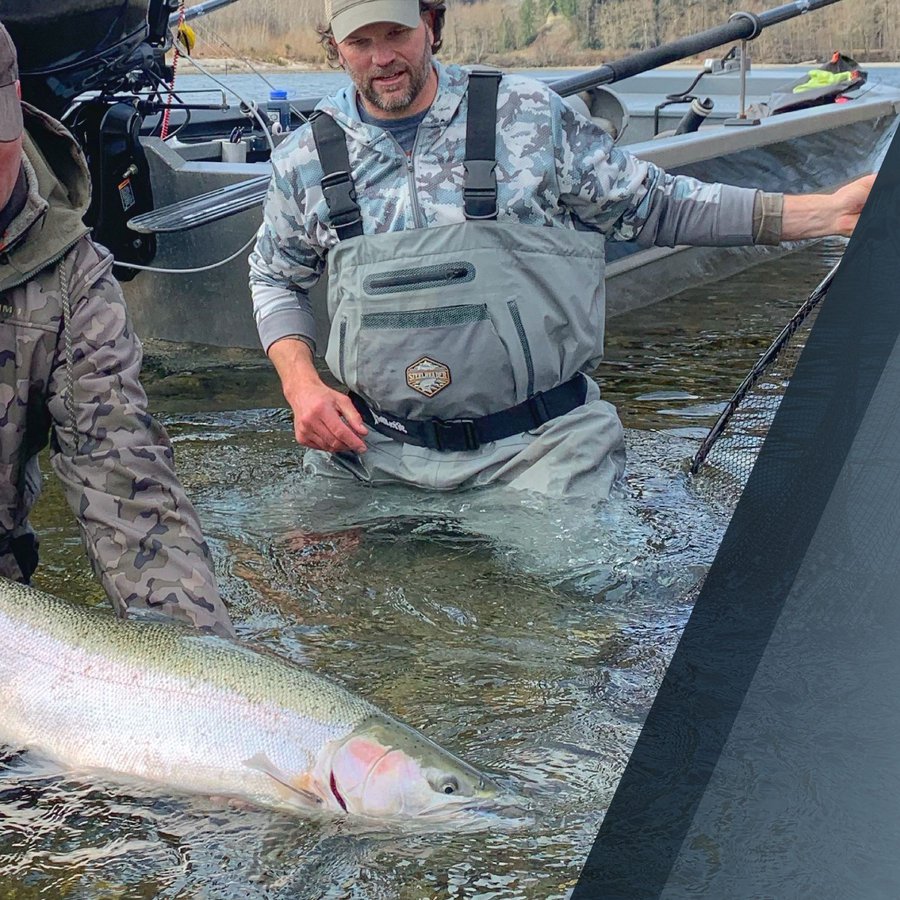This blog is by Mercury Pro Team member Rob Endsley, an Alaska charter captain (princeofwalessportfishing.com), former river guide and host of the “Outdoor Line” radio show in Seattle, Washington.
If Alaska isn’t on your fishing-destination bucket list, it should be. Not only does the state offer some of the finest coldwater fishing in the world, but the scenery and wildlife you’ll encounter on an Alaskan fishing adventure will leave a mark on your soul.
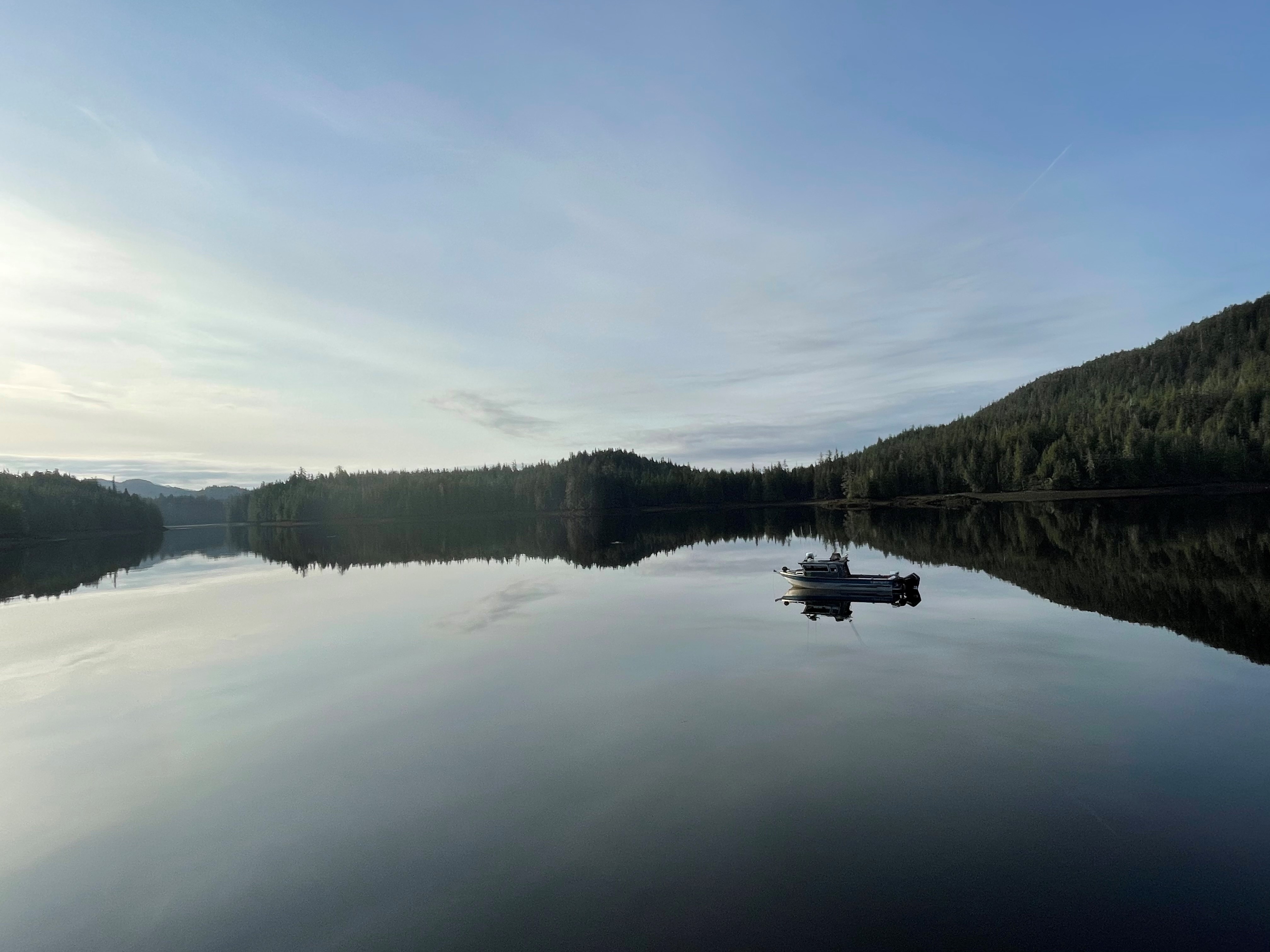 It’s commonplace to drift for abundant salmon within a stone’s throw of feeding humpback whales with towering mountain peaks as a backdrop. Or to cast flies to aggressive rainbow trout in a stream choked with fish while a grizzly bear wades nearby catching salmon.
It’s commonplace to drift for abundant salmon within a stone’s throw of feeding humpback whales with towering mountain peaks as a backdrop. Or to cast flies to aggressive rainbow trout in a stream choked with fish while a grizzly bear wades nearby catching salmon.
Alaska is truly the last best outdoor paradise in North America, but with a dizzying number of lodges and guides to choose from and many different productive towns and locations spread around the state, it can be difficult to zero in on an area and book a trip. That’s where I can help. I’ve been fishing in Alaska for 30 years and running Prince of Wales Sportfishing in Craig, Alaska, for more than 20 years.
I put together the following tips to help dial in your search for an Alaska fishing adventure and make planning your trip more manageable.
1. Choose a target species and season
Alaska offers incredible opportunities for many fish species, including king salmon, rainbow trout, halibut, lingcod, rockfish, silver salmon, pink salmon, chum salmon, sockeye salmon, pike, grayling, sheefish, char, dolly varden, steelhead and cutthroat trout. Your first step is probably to zero in on a species and decide what you want to accomplish. Are you after numbers of fish or size?
Once you have an idea, ask potential guides and lodges about the absolute best times to visit for a chance at catching the species you want to target. The fishing opportunities can vary greatly by region and season for a variety of reasons. For instance, in some parts of Alaska, king salmon seasons have been shortened or closed altogether in recent years, and in other parts the season is not only open, but the fishing is excellent. In southeast Alaska where we operate our charter business, the numbers for king salmon can sometimes be better in June, but most of the trophy kings are caught in July or early August.
It’s fishing, of course, and nothing is guaranteed, but if you want to catch a trophy trout or salmon versus putting up big numbers, that information helps the lodge owner or guide recommend dates that might work best.
2. Focus on freshwater or saltwater
There are definitely some locations in Alaska that offer excellent saltwater and freshwater fishing options in the same area, but by and large I suggest that you focus on saltwater or freshwater and go with a lodge or guide that specializes in whichever one you choose. That gives you the best chance of having a remarkable fishing experience.
For instance, you can certainly fly-fish for trout at some of the major saltwater fishing destinations in southeast Alaska, but for the ultimate fly-fishing experience, a trip to one of the many freshwater rivers of the Bristol Bay drainage in southwest Alaska can’t be beat.
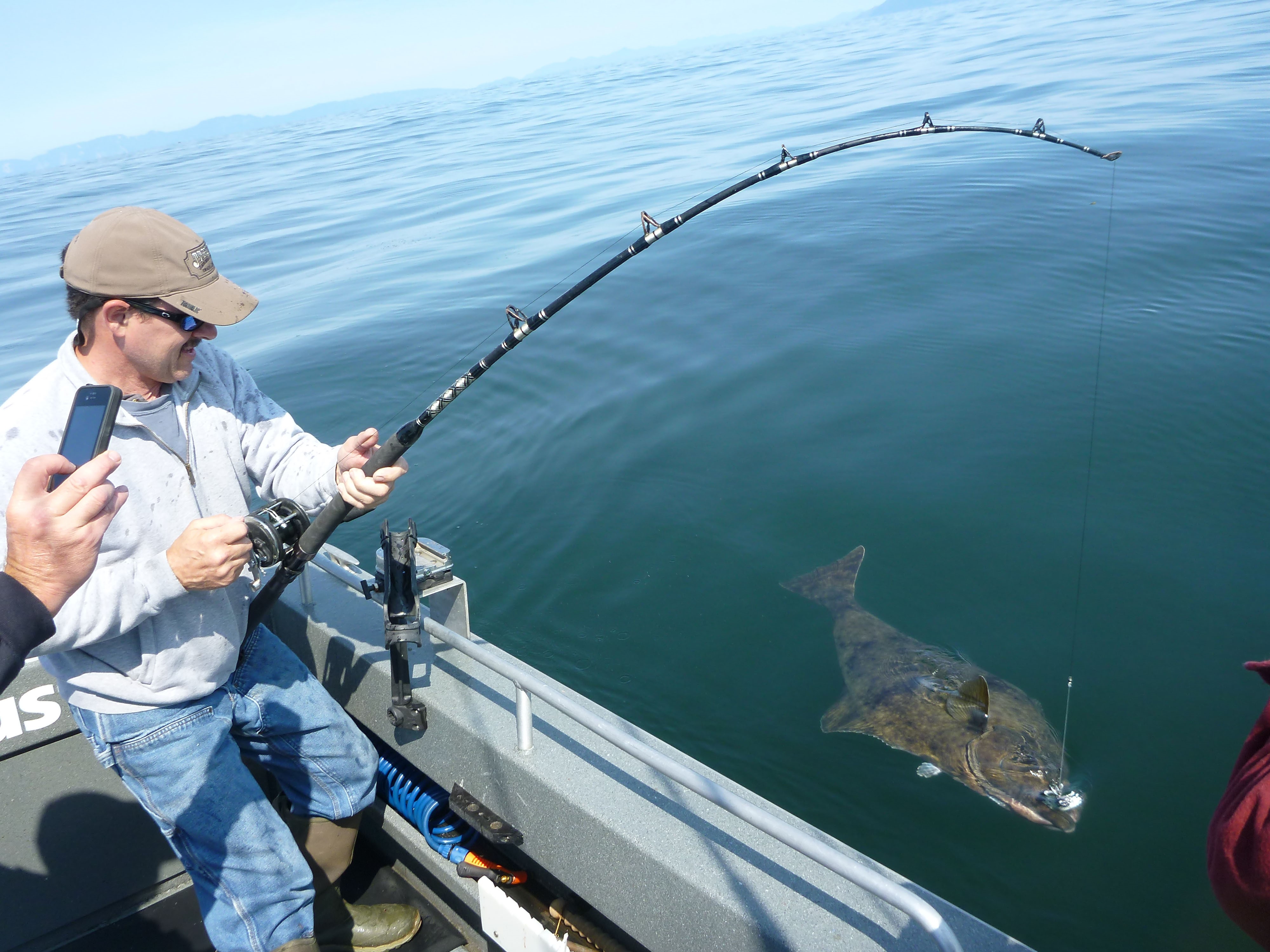 3. Decide if you’ll fish ocean waters or protected waters
3. Decide if you’ll fish ocean waters or protected waters
If you want to fish saltwater and are prone to getting motion sickness on the ocean, you might consider reserving space at a destination that offers fishing in protected waters – places like Pelican, Hoonah, Gustavus, Juneau, Wrangell, Petersburg, Coffman Cove and Ketchikan in southeast Alaska. These “inside locations” may not offer access to the king salmon highway off the outer coast, but the silver salmon fishing and bottom fishing can still be downright awesome in some areas during July, August and September when the silvers are running.
Even with motion sickness in mind, coastal ports like Seward, Homer, Kodiak, Yakutat, Sitka, and Craig can still be enjoyed with proper seasickness precautions. Your guide or lodge can probably provide some advice for dealing with seasickness, and you should consider consulting a medical professional in advance if you’re especially prone to problems. This would open up some tremendous fishing opportunities in coastal communities.
4. Choose your accommodations
Once you decide on a species and fishing area, you need to decide what kind of accommodations you want.
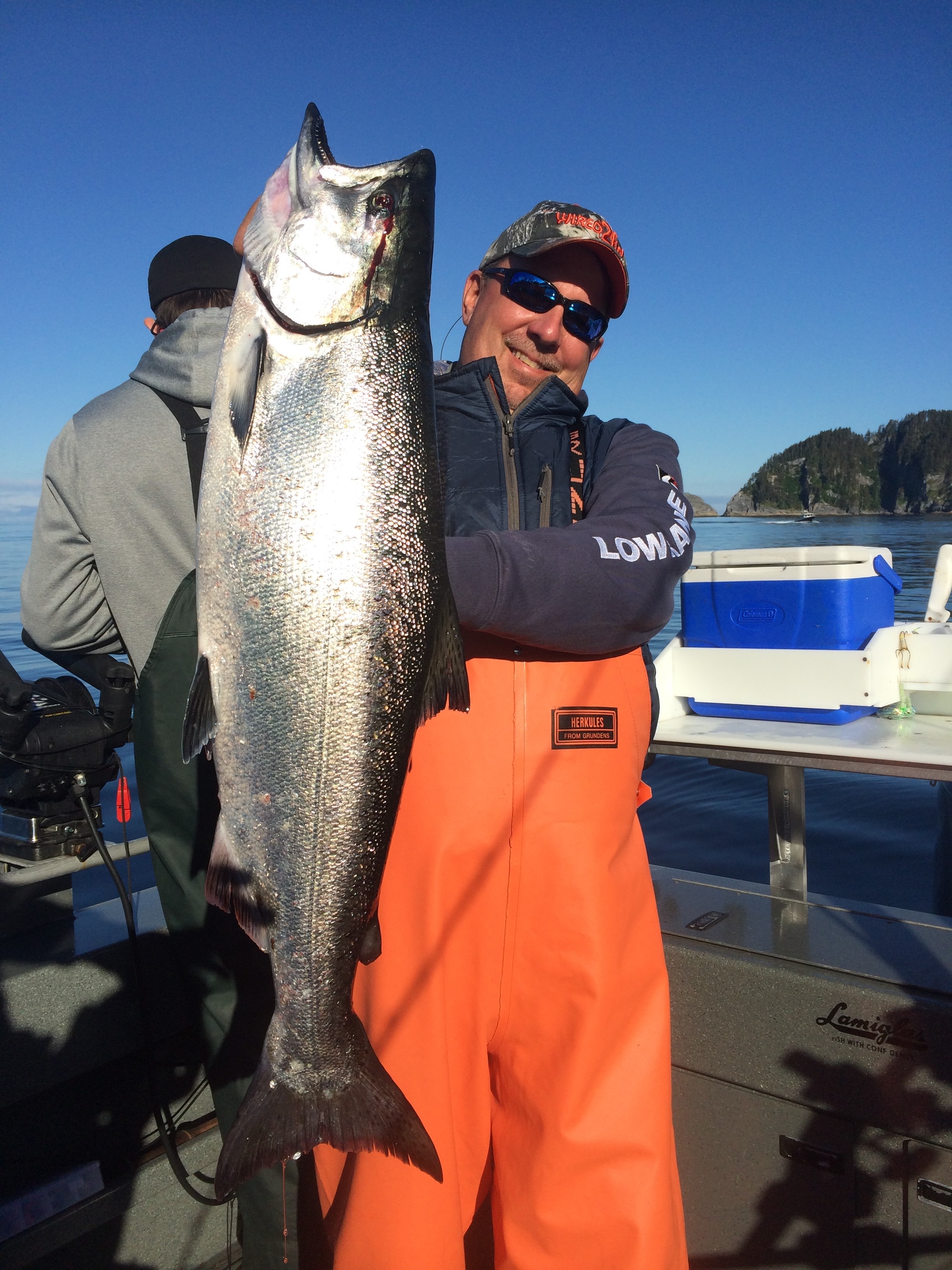 The most comfortable amenities, of course, are going to come at a price. If the lodge has an in-house masseuse, spa, 5-star meals and immaculate rooms with a million-dollar view, that’s going to drive the price up considerably. But if that’s what you’re looking for, there are some amazing locations in Alaska that offer great fishing and an over-the-top lodge experience. You can also find plenty of more modest lodges that include meals, transportation and more.
The most comfortable amenities, of course, are going to come at a price. If the lodge has an in-house masseuse, spa, 5-star meals and immaculate rooms with a million-dollar view, that’s going to drive the price up considerably. But if that’s what you’re looking for, there are some amazing locations in Alaska that offer great fishing and an over-the-top lodge experience. You can also find plenty of more modest lodges that include meals, transportation and more.
If a DIY trip is in your budget, a sockeye fishing trip to the Kenai Peninsula could be of interest, or perhaps a trip to Valdez, Kodiak or Prince of Wales Island in the fall when the silvers are running in the streams. You can rent a car, stay at a hotel, eat at local restaurants, process the fish yourself and have a great chance at making some incredible memories. Start your research on the Alaska Department of Fish and Game website to learn about seasons, regulations and access.
Another budget play is to bypass some of the high-end lodges and look for a smaller operation or bed and breakfast that offers fishing packages. There are also plenty of options for booking day charters and guides in Alaska and piecing a package together yourself. Locations on the Kenai Peninsula such as Soldotna, Homer and Seward offer great day-fishing options with a variety of lodging and restaurants nearby. In Soldotna, it’s possible to catch salmon on the Kenai or Kasilof river in the morning and dig a limit of razor clams in the afternoon. Then book a halibut charter on Cook Inlet out of Clam Gulch the next day and a fly-out sockeye trip yet another day.
Finally, you could book one of the hundreds of U.S. Forest Service cabins that can be found around the state. They can be accessed by the road system, canoe, floatplane, boat, snowmobile and just about any other mode of transportation you can think of. Start your search with the Alaska Public Lands Information Centers at AlaskaCenters.gov.
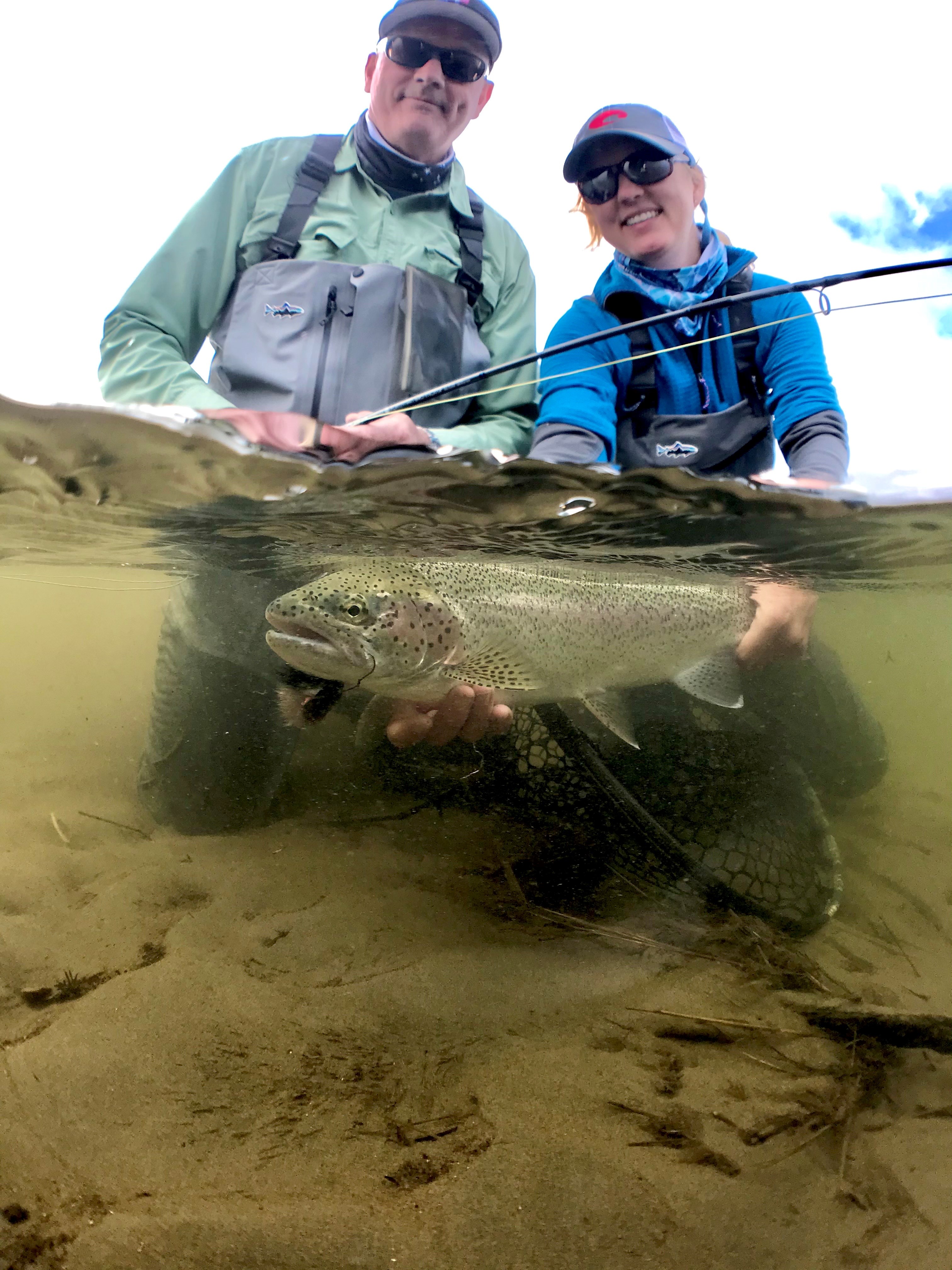 5. Factor in the weather
5. Factor in the weather
Mother Nature dictates what happens in Alaska and when, which is exactly what makes the state so special. Alaska is a rugged and spectacular land sculpted by years of abuse from unrelenting weather. If travelling to a lodge or destination that can only be accessed by floatplane, plan on spending a day or two on either end waiting for the weather. If you’ve got a work obligation the day after you’re scheduled to be home, you’d better reschedule with work or go someplace where you can guarantee you’ll be able to get out on time.
On a caribou trip into the Arctic last year, our pilot sent us a message on a satellite communication device, telling us he wanted to get two of us out of camp early because some weather was coming in. Since my hunting partner, Mike, and I were tagged out, the pilot picked us up, and we ended up in a small native village, at a bed and breakfast run by an incredibly entertaining woman that had moved there from the East Coast more than 20 years before. Mike and I sat around telling stories with her for hours and made a new friend. Go with the flow, and your trip will be that much more enjoyable.
6. Plan for additional costs
Be aware of additional costs like a fishing license and king salmon stamp, fish processing, and the cost to transport your catch home on the airline. We encourage the guests that visit our operation to pack everything they need for their trip in a carry-on bag. This saves money on the return flight since most of the airlines allow two checked bags for free.
Another cost to consider is a rental vehicle. Fishing on the Kenai Peninsula, for instance, usually requires renting a car at Ted Stevens Anchorage International Airport. If you plan on bringing fish home, rent a vehicle with enough space to transport fish boxes or coolers full of fish.
If your trip includes a floatplane or bush plane, there will be a weight limit for travel. When you pack, be sure to factor in the weight of the fish you plan to keep for the flight back out.
7. Prepare for Alaska
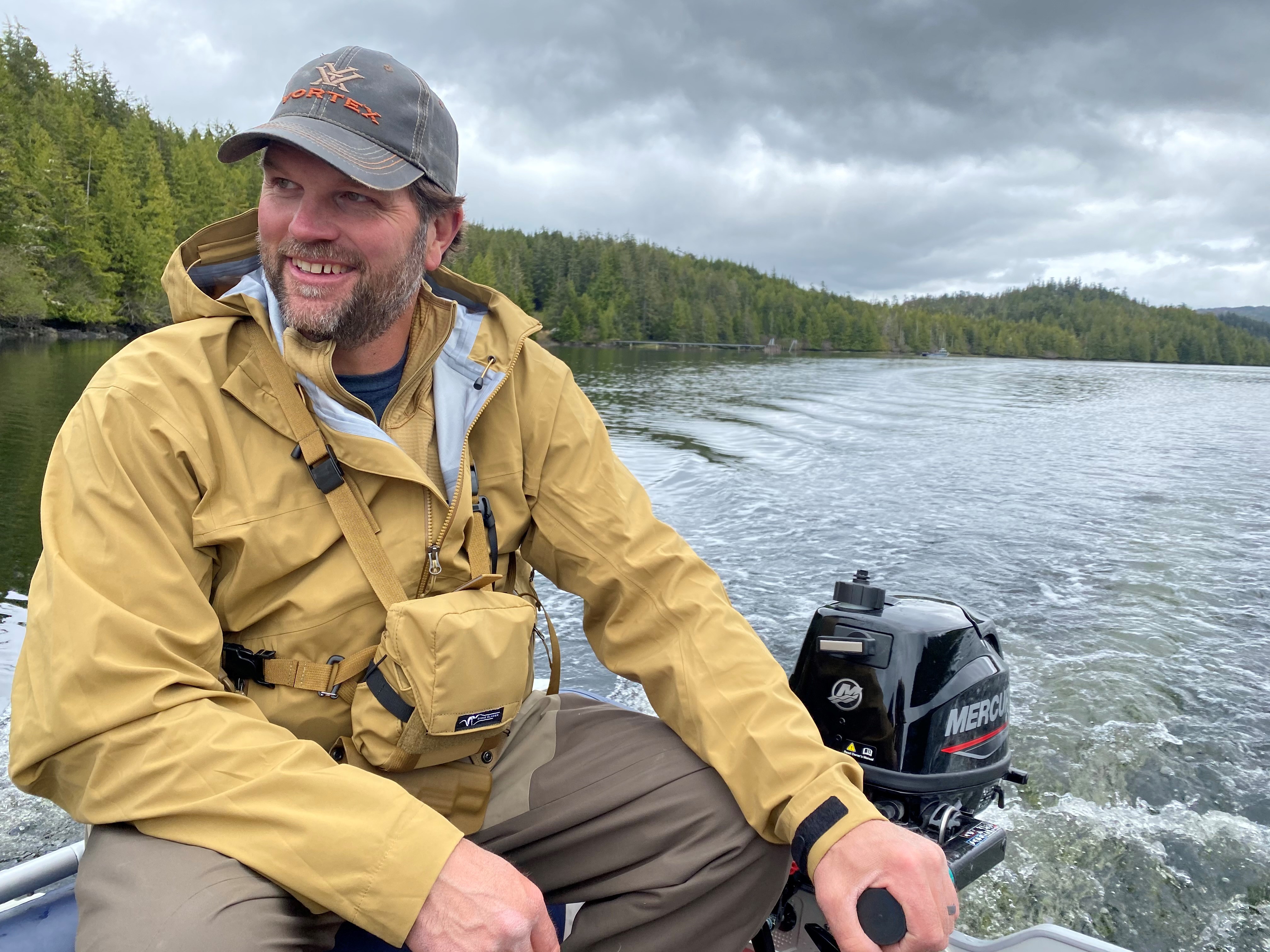 In many parts of Alaska, getting a prescription or finding even basic items can be a challenge. Keep this in mind if you have a medical condition or desire to be close to a population center. Then be sure to do some research about resources in the area before making the trip, and pack what you need to stay comfortable and healthy.
In many parts of Alaska, getting a prescription or finding even basic items can be a challenge. Keep this in mind if you have a medical condition or desire to be close to a population center. Then be sure to do some research about resources in the area before making the trip, and pack what you need to stay comfortable and healthy.
Another item to consider is bear spray. You can’t travel with bear spray on any of the major airlines, and for obvious reasons it’s sure handy to have if you plan on fishing any of the rivers in Alaska. A guide will probably pack bear spray or one of the weapons of choice for deterring grizzly bears on the river, but if you’re on a DIY trip, you’ll want to check ahead and see if bear spray is available at your final destination. If not, it can be purchased in Anchorage or one of the other major towns along the way.
Speaking from experience, I can say that most of the reputable fishing operations in Alaska book up well in advance of the season. You might get lucky and find an opening due to a cancellation. But it’s better to begin your planning at least a year ahead to be sure you get the chance to enjoy the trip you’ve dreamed of.
To see more from Rob Endsley, follow him on Instagram.
Photo Credits: Wired2Fish, Chris Buscher, Rob Endsley, Kate from Frigate Travel


















 It’s commonplace to drift for abundant salmon within a stone’s throw of feeding humpback whales with towering mountain peaks as a backdrop. Or to cast flies to aggressive rainbow trout in a stream choked with fish while a grizzly bear wades nearby catching salmon.
It’s commonplace to drift for abundant salmon within a stone’s throw of feeding humpback whales with towering mountain peaks as a backdrop. Or to cast flies to aggressive rainbow trout in a stream choked with fish while a grizzly bear wades nearby catching salmon. 3. Decide if you’ll fish ocean waters or protected waters
3. Decide if you’ll fish ocean waters or protected waters  The most comfortable amenities, of course, are going to come at a price. If the lodge has an in-house masseuse, spa, 5-star meals and immaculate rooms with a million-dollar view, that’s going to drive the price up considerably. But if that’s what you’re looking for, there are some amazing locations in Alaska that offer great fishing and an over-the-top lodge experience. You can also find plenty of more modest lodges that include meals, transportation and more.
The most comfortable amenities, of course, are going to come at a price. If the lodge has an in-house masseuse, spa, 5-star meals and immaculate rooms with a million-dollar view, that’s going to drive the price up considerably. But if that’s what you’re looking for, there are some amazing locations in Alaska that offer great fishing and an over-the-top lodge experience. You can also find plenty of more modest lodges that include meals, transportation and more. 5. Factor in the weather
5. Factor in the weather In many parts of Alaska, getting a prescription or finding even basic items can be a challenge. Keep this in mind if you have a medical condition or desire to be close to a population center. Then be sure to do some research about resources in the area before making the trip, and pack what you need to stay comfortable and healthy.
In many parts of Alaska, getting a prescription or finding even basic items can be a challenge. Keep this in mind if you have a medical condition or desire to be close to a population center. Then be sure to do some research about resources in the area before making the trip, and pack what you need to stay comfortable and healthy.